#eco conscious
Text

@/consciousstyle on Instagram
from the 'create & transform {handicrafting hobbies}' Pinterest board
#g#infographic#slow fashion#mindful consumption#earth stewardship#slow living#soft living#ahimsa#karma#holistic leveling up#leveling up#that girl#green juice girl#mindsets#eco conscious#ecofeminism#sidewalkchemistry
1K notes
·
View notes
Text

595 notes
·
View notes
Text
Do people know most paper receipts are harmful to their health?
I'm going to get up on my soapbox for a minute, but do people realize how pretty much everyone is being overloaded with endocrine disruptors like BPA/BPS on a near-daily basis??
I don't think many people understand that ever since most of the world transitioned to thermal paper receipts (cheaper than ink), almost every receipt you handle from the gas station to the grocery store to the Square terminal printer at the local co-op is coated with Bisphenol-A (BPA) or its chemical cousin Bisphenol-S (BPS).
These chemicals have not only been proven to cause reproductive harm to human and animals, they've also been linked to obesity and attention disorders.
Not sure if your receipt is a thermal receipt? If you scratch it with a coin and it turns dark, it's thermal.
BPA/BPS can enter the skin to a depth such that it is no longer removable by washing hands. When taking hold of a receipt consisting of thermal printing paper for five seconds, roughly 1 μg BPA is transferred to the forefinger and the middle finger. If the skin is dry or greasy, it is about ten times more.
Think of how many receipts you handle every day. It's even worse for cashiers and tellers, who may handle hundreds in a single shift. It is also a class issue, since many people who work retail and food service are lower-income and will suffer worse health consequences over time from the near-constant exposure.
Not only that, receipts printed with thermal ink are NOT recyclable, as they pollute the rest of the paper products with the chemicals.
People don't know this and recycle them anyway, so when you buy that "green" toilet paper that says "100% recycled"? Yup, you are probably wiping your most sensitive areas with those same chemicals (for this reason, I buy bamboo or sugarcane toilet paper as a sustainable alternative to recycled paper).
This page from the Minnesota Pollution Control Agency has some good links if you want to learn more.
As consumers, we need to demand better from our businesses and from our governments. We need regulation of these chemicals yesterday.
If you are a buyer or decision-maker for a business, the link above also contains a shortlist of receipt paper manufacturers that are phenol-free.
If you work at a register, ask customers if they want a receipt. If they don't and you can end the transaction without printing one, don't print one!
As a consumer, fold receipts with the ink on the inside, since that's where the coating is. Some more good tips here.
And whatever you do, DO NOT RECYCLE THERMAL RECEIPTS
#i realized the other day that lots of ppl i talked to had no idea this was even a thing#important psa#demand more from your retailers and governments#environment#bisphenols#bpa free#bpa/bps#retail#food service#shopping#working class#capitalism#endocrine disruptors#endocrine disorders#adhd#eco lifestyle#environmental pollution#pollution#toxic chemicals#reproductive health#science#health#environmentalism#eco conscious#human health#consumer goods#consumer awareness#green living#green business#ecofriendly
160 notes
·
View notes
Text










"Gnizdo" Houses, Makhno Village Resort, Ukraine,
© MAKHNO Studio
#art#design#architecture#boutique hotel#travels#interior design#luxury hotel#luxury lifestyle#interiors#luxury hotels#gnizdo#makhno#resort#concept#render#nature#retreat#ukraine#eco-lodge#eco conscious#cave#sculpture
32 notes
·
View notes
Text
If you’re interested in learning to repair your clothes, this beautiful book on visible mending is out 23rd May and available for pre-order now here 😍

And you can find Slow Stitch Club here
#visible mending#mending#repair#sewing#eco friendly#eco#eco conscious#slow fashion#slow stitching#slow stitch club#reduce reuse recycle#craft#crafting#creative#sew#clothes#fashion
23 notes
·
View notes
Text
one of my favorite ecofeminism/black feminism reads is definitely The Green Belt Movement by Wangari Maathai, it's an inspiring story of encouraging people to help their country improve the environment with new ideas for the rest of the world to have hope in

there's only one book left on Amazon but you can buy used ones there!
#ecofeminism#eco conscious#intersectional feminism#black feminism#womanism#feminism#ecology#ecosystem
16 notes
·
View notes
Text
embracing eco-friendly living

reduce, reuse, recycle: it's the mantra we all know and love! try to minimize your waste by opting for reusable items like water bottles, coffee cups, and shopping bags. and don't forget to recycle whenever possible to give new life to materials.
go plant-based: consider incorporating more plant-based foods into your diet. not only is it healthier for you, but it also has a significantly lower environmental footprint compared to animal products.
choose eco-friendly products: look for products that are made from sustainable materials, such as bamboo toothbrushes, reusable silicone food storage bags, and biodegradable cleaning supplies. every little switch adds up to make a big difference!
conserve energy: be mindful of your energy consumption by turning off lights when not in use, unplugging electronics, and investing in energy-efficient appliances. small changes like these can help reduce your carbon footprint.
support ethical brands: seek out companies that prioritize sustainability and ethical practices in their production processes. by supporting these brands, you're voting with your dollar for a greener, more responsible future.
9 notes
·
View notes
Text
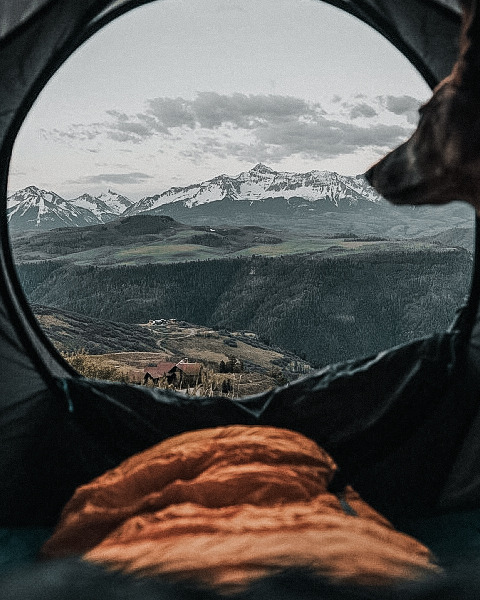
#travel nature#nature travel#landscape#travel photography#wanderlust#eco conscious#eco lifestyle#travel#travelling#lifestyle#outdoor life#outdoor lifestyle#outdoor living#outdoor#outdoors
12 notes
·
View notes
Text
NEVADA TRIES ILLEGAL MEANS TO FORCE SHEEP RANCHER OF HIS LANDS

Photo by Larry Blaine
BUREAU OF LAND MANAGEMENT GOVERNMENT RUN AMOK GRAZING NEVADA SHEEP
NEVADA TRIES ILLEGAL MEANS TO FORCE SHEEP RANCHER OF HIS LANDS
By RANGEFIRE! / December 4, 2023
Please donate to Hank Vogler here By Protect The Harvest
NEVADA RANCHER FIGHTS FOR HIS LIVELIHOOD
Hank Vogler has deep roots in western ranching and is well-versed in the unique challenges it involves. Over the years, he has been a tireless patriot and an informed, outspoken, and articulate advocate for ranchers. His insightful and provocative writings have appeared in numerous publications. C.J. Hadley, editor and publisher of RANGE magazine has referred to him as a “brilliant and entertaining communicator.” Vogler has also been an engaged and dedicated member of his community, serving on various boards and committees at the state and local levels. It follows, then, that Vogler is no stranger to controversy.
Deep Roots in Ranching
Growing up, he spent as much time as he could on his grandfather’s ranch, working as part of the cowboy and haying crews. That ranch sold when Vogler was 15, and he then set his sights on earning an agriculture degree and running his own operation. He graduated from the University of Nevada Reno in 1971, and went straight to ranching in Harney County, Oregon.
A winter of record snow in the Steens Mountains resulted in 30- some ranches being entirely flooded out. There is speculation that much of the devastating flood damage could have been prevented if not for government negligence, and still further speculation that the overwhelming losses were actually allowed to happen to facilitate the expansion of the Malheur wildlife refuge. With no way for his ranch to recover, Vogler headed to Nevada.
We’re Not Nearly as Dumb as the Government Wants Us to Be
Following the loss of his Oregon ranch, it may have been Vogler’s astute criticisms of the bureaucracy that first put him in the proverbial crosshairs for attacks, and he has stayed there due to his continued, well-informed involvement in contentious western ranching issues. As a result, he has been forced to fight at great cost to keep his land and his livelihood.
In a recent interview, Vogler quipped, “We’re not nearly as dumb as the government wants us to be.”
During his time in Oregon, he established many life-long friendships, including one with the Hammond family. Vogler testified for the Hammonds in court, which almost certainly stoked the fires of resentment towards him within the involved agencies.
Whisky is for Drinking; Water is For Fighting
Since 1985, Vogler has operated Need More Sheep Company in Spring Valley, near Ely in White Pine County, Nevada. Like numerous western ranches, his operation consists of privately owned land as well as attached grazing rights on Bureau of Land Management and United States Forest Service managed lands.
An old saying, often attributed to Mark Twain, goes: “Whisky is for drinking; water is for fighting.” In Nevada, the driest state in the nation, water issues can be especially volatile. It was in 1989 that the Southern Nevada Water Authority (SNWA) first proposed that a 300-mile pipeline be built from rural eastern Nevada to Las Vegas, which has historically relied on water from the Colorado River. Said pipeline would cost taxpayers $15 billion, and siphon billions of gallons from four rural valleys in White Pine and Lincoln counties. One of the valleys targeted was Spring Valley.
An Offer You Can’t Refuse
In order to facilitate this, the SNWA started buying up ranches to obtain the appurtenant water rights, using taxpayer money to pay dramatically inflated prices for the properties. According to Vogler, SNWA paid around $60 million total for a collection of ranches that were realistically worth around $10 million altogether. That kind of money was hard for many to refuse, and impossible for most other ranchers to compete with. The SNWA eventually accumulated 92 various-sized parcels in White Pine County, totaling thousands of acres and including an abundance of water rights.
Great Basin Water Network
However, the pipeline concept was met with fierce opposition from the get-go. A large and diverse group of stakeholders—including Vogler–came together to form the Great Basin Water Network. Finally, after 30-some years of court battles, SNWA’s pipeline plan was officially terminated in federal court in early 2020. Nevertheless, the SNWA has held onto its properties in White Pine County, and even despite the pipeline being shot down in federal court, still has pending water rights applications as well as an application for the pipeline’s right of way with the Bureau of Land Management.
SNWA Filing for Water Rights
One of the water rights that SNWA has filed for is within a BLM grazing allotment that Vogler has utilized since about 1990, and has owned since 2004. Originally, Vogler had a casual business partnership with Reid Robison, who owned the Spring Valley Ranch base property and attached grazing rights. One of the grazing units consists of three allotments, or pastures, with a total of 8172 AUMs that include both cattle and sheep. (AUM stands for animal unit month, which is the amount of on-range feed it takes to sustain one 1000-pound cow and her calf, or the equivalent, which is five sheep). Vogler leased and utilized the pastures with terrain and vegetation more suitable for sheep, while Robison utilized those more appropriate for cattle.
Delayed Study and More Maneuvers
Vidler Water eventually obtained the ranch, but Vogler continued the management and utilization of the sheep allotments. In 2002, an agreement was penned that a three-year monitoring study would take place in order to officially determine the number of sheep AUMs versus cattle AUMs.
Vogler purchased the sheep allotments in 2004, even though the study had not been completed. Attached to his deed of trust was an exhibit stating that any adjustments to the total number of sheep would be in Vogler’s favor. Vogler was assured repeatedly that the study would be done but even as of March 2022, the study has not been completed. Vogler’s inquiries about the status of the study have been repeatedly stonewalled.
In 2006, the Spring Valley Ranch was purchased by the SNWA for $22 million. With that purchase came a number of other grazing allotments, but of course not those previously sold to Vogler by Vidler water in 2004. Regardless, the SNWA filed for stockwater rights on one of Vogler’s allotments.
Nevada Water Resources – Fair and Equitable
The Nevada Division of Water Resources website states:
“Nevada’s first water statute was enacted in 1866 and has been amended many times since then. Today, the law serves the people of Nevada by managing the state’s valuable water resources in a fair and equitable manner. Nevada water law has the flexibility to accommodate new and growing uses of water in Nevada while protecting those who have used the water in the past.
Nevada water law is based on two fundamental concepts: prior appropriation and beneficial use. Prior appropriation (also known as “first in time, first in right”) allows for the orderly use of the state’s water resources by granting priority to senior water rights. This concept ensures the senior uses are protected, even as new uses for water are allocated.
All water may be appropriated for beneficial use as provided in Chapters 533 and 534 of the Nevada Revised Statutes (referred hereafter as NRS). Irrigation, mining, recreation, commercial/industrial and municipal uses are examples of beneficial uses, among others.”
Harassment
Hence, even though Vogler owns the grazing rights on that allotment and had been putting the water there to beneficial use as stock water for years, and despite the fact that the pipeline project was terminated, SNWA nevertheless filed for those water rights and have repeatedly turned Vogler in for alleged “willful trespass” of his sheep, resulting in thousands of dollars in fines. Considering other events that have transpired, it certainly seems that spite is their main motivation and putting Vogler out of business is their goal.
Vogler has documented vandalism to his troughs, troughs being completely torn out, and harassment of his sheepherders by SNWA employees, and yet he says the BLM refuses to look at this issue. He has been told that no BLM employee would dare look into it, as it could be a career ender for them. Further, Vogler stated that the BLM State Director and representatives of the SNWA have monthly meetings, when, if the pipeline project is truly dead, there wouldn’t be a need.
No State Agencies Can Hold BLM Grazing Rights
Through other issues, it had been clearly established for some time and confirmed by the solicitor general for the BLM, that no state agencies can hold BLM grazing rights since they are not qualified to run livestock, regardless of their land ownership. The USFS is also very clear in their policy that no agencies can own grazing permits. And yet somehow, SNWA has connived its way into control over federally managed grazing allotments in White Pine County. Vogler attests that this is unlawful, perjury, and abuse of power.
Double Standards and Negligence
There are other circumstances surrounding the issue that strongly suggest that Vogler is being punished and scapegoated by the powers that be. He feels strongly that his livelihood is under attack because he has exposed the double standards and negligence of the BLM in the region, as well as what amounts to illegal grazing by the SNWA, and the apparent cooperation between the two agencies.
Barred from Tippett Pass – Causing Undue Stress to Sheep
For no apparent reason, the Ely BLM field manager has suspended Vogler’s right to merely herd his sheep across an allotment, known as Tippett Pass. Utilizing the route has been a normal part of Vogler’s operation for years, and is essential for the well-being of his sheep as well as the quality of the wool he’ll have to sell. One unfeasible alternative to crossing Tippett Pass would be to herd the sheep many additional miles over four mountain passes, through incredibly rough, difficult terrain with little available water. The ewes are heavily pregnant, and taking this alternative route home would be “absolutely cruelty to animals,” Vogler said.
The other equally unfeasible alternative would be to haul the sheep home. In addition to a substantial freight bill, the pregnant ewes would suffer undue stress, and the wool would lose thousands of dollars in value due to manure contamination from the sheep being close together in the trucks.
Vogler would normally start herding the sheep toward home by mid-March. He has been pursuing relief through the court system, filing appeals to the stay on his sheep crossing the Tippett Pass allotment. On March 9, 2022, he was informed that in order to bring his sheep home via Tippett Pass, he will have to go through an NEPA process that would take months. This is unheard of for such a long-established practice
Who’s Next?
In a column, Vogler wrote: “Who will be the next Cliven Bundy or Dwight and Steve Hammond? Or, for that matter, Wayne Hage? It appears that bureaucrats fear the people who live on the far side of nowhere worse than the anarchists. Could it be the independence and self-reliance of rural people that offends the government more than mob rule in the streets? Or is it that rural people seem to have calm, fulfilling lives? Or is the issue just that there are so few people left feeding the masses that rural folks have become easy targets?”
So, who is next? Will it be me for asking too many questions? Will it be you
https://rangefire.us/2023/12/04/nevada-tries-illegal-means-to-force-sheep-rancher-of-his-lands/
https://rangefire.us/2023/12/04/nevada-tries-illegal-means-to-force-sheep-rancher-of-his-lands/
8 notes
·
View notes
Text
It might help you to ask yourself if what you’re about to say is useful.
#mindfulness#letsberealgenz#mindfullifestyle#mindful education#mindfulmovement#mindful meditation#positive mindset#growth mindset#conscious awareness#law of consciousness#spiritual awakening#eco conscious#social conscious#conscious living#self conscious#consciousness#positive thinking#positive thoughts#positivity#spiritual community#spiritual development#spiritual#spirituality#personal growth#personal development#positive energy#mindset#mind control#meditatedaily#meditative
7 notes
·
View notes
Text
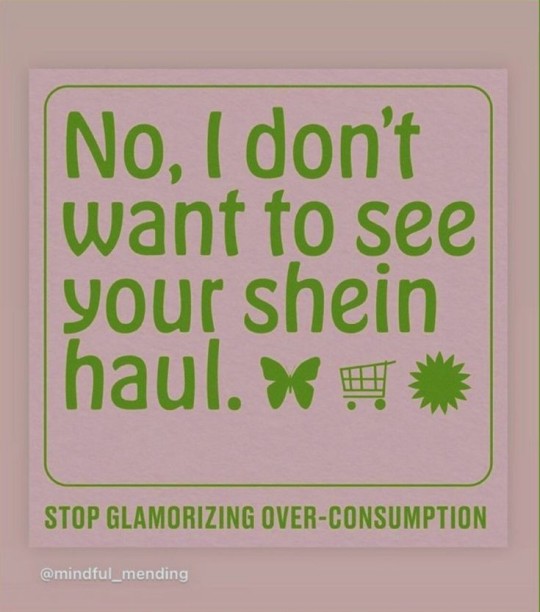
or temu haul
#txt#mindful consumption#mindful living#slow living#slow fashion#soft living#eco conscious#ecofeminism#solarpunk#ethical consumption#holistic leveling up#leveling up#earth stewardship#that girl#green juice girl#wellness journey#sidewalkchemistry
941 notes
·
View notes
Text
The atmosphere, the earth, the water and the water cycle - those things are good gifts. The ecosystems, the ecosphere, those are good gifts. We have to regard them as gifts because we couldn't make them. We have to regard them as good gifts because we couldn't live without them.
-- Environmentalist Wendell Berry
33 notes
·
View notes
Text
Seeing as how my post is getting low engagement, I'm curious:
Bonus: reblog with your answer and if you like, your home country.
#i realized the other day that lots of ppl i talked to had no idea this was even a thing#demand more from your retailers and governments#important psa#reblog for a bigger sample size#environment#bisphenols#bpa free#bpa/bps#retail#food service#shopping#working class#capitalism#endocrine disruptors#endocrine disorders#adhd#eco lifestyle#environmental pollution#pollution#toxic chemicals#reproductive health#science#environmental activism#environmental justice#health#environmentalism#eco conscious#human health#consumer goods#consumer awareness
17 notes
·
View notes
Text

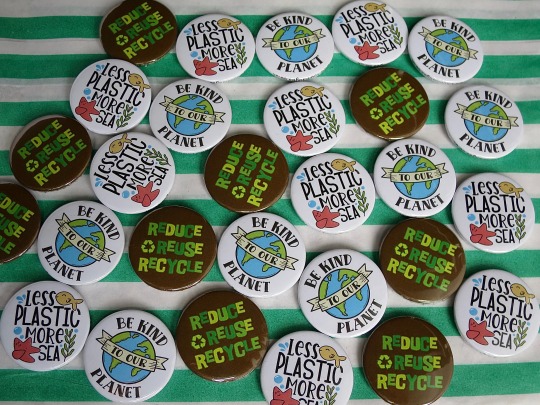
♻️ We have been making a few ECO & Green themed button badges these past few weeks - great for environmental groups and spreading a positive message 🌍 💚 All our badges are proudly handmade by us, Vicki & John
#craft#buttons#bbloggers#25mm#badges#badge#handmade#koolbadges#badgemaker#green party#green#green aesthetic#be kind#earthdayeveryday#earth#eco conscious#environment#enviromental#environmetalists#noplanetb
6 notes
·
View notes
Text
Simple Ways To Embrace Sustainable Living in Your Daily Life

Are you tired of feeling like your day-to-day routine is contributing to the destruction of our world? Do you wish to make a difference but don't understand where to begin? Well, look no further because we have actually got you covered!
With our article "Simple Ways To Embrace Sustainable Living in Your Daily Life", we aim to provide you with practical and simple actions to include sustainable living practices into your everyday regimen. From reducing plastic waste to conserving energy, small modifications can make a big distinction in creating a more eco-friendly lifestyle.
In this article, we'll talk about tips and techniques that are both great for the environment and beneficial for your health and wallet. Whether you're a university student, a working specialist, or a stay-at-home mom or dad, our detailed guide will assist you take those crucial very first actions towards a sustainable lifestyle.
Table Of Contents
1. Understanding Sustainable Living
2. Decreasing Carbon Footprint
3. Public Transport and Sustainable Commute
4. Single-Use Plastic Alternatives
5. Food Choices and Sustainable Consuming
6. Mindful Consumption and Ethical Fashion
7. Waste Management and Recycling
8. Conclusion
youtube
Understanding Sustainable Living

Sustainable living is a conscious option to live in a more environment-friendly way that lowers greenhouse gas emissions and decreases our negative environmental impact on the planet. It means choosing to be more conscious of the natural deposits we utilize and discovering methods to both decrease and recycle products in our daily lives. Here are some practical and simple ways you can start accepting green living in your everyday life:
1. Start with the essentials
Begin by making little modifications to your day-to-day routine that can have a big impact in the long run. This consists of shutting off devices and lights when not in use, taking shorter showers, and utilizing environmentally friendly cleansing items. These simple steps can help in reducing your carbon footprint and save energy and resources.
2. Buy reusable products
Single-use products like plastic bags, straws, and water bottles have a substantial unfavorable effect on the environment. By investing in reusable items, such as cloth bags, metal straws, and reusable water bottles, you can substantially minimize the amount of waste you produce and help secure the world.
3. Select sustainable transport choices
Automobiles are a significant factor to greenhouse gas emissions. By picking sustainable transportation choices like public transport, biking, or strolling, you can reduce your carbon footprint and add to a healthier planet.
4. Bear in mind your food choices
The food industry has a substantial impact on the environment. By picking natural and locally produced foods, decreasing meat usage, and preventing food waste, you can lower your environmental effect and promote sustainable living.
5. Choose sustainable style
The fashion business is a significant contributor to greenhouse gas emissions, pollution, and waste. By selecting ethical and sustainable style choices, you can help lower the negative impact of the industry on the environment.
6. Practice conscious consumption
Prior to making a purchase, ask yourself if you truly need it and if it aligns with your values of sustainable living. Consider choosing items made from sustainable materials and choose for product packaging that can be recycled.
7. Manage your waste
Proper waste management and recycling is key to minimizing our negative influence on the planet. Arrange your waste into recyclable and non-recyclable materials, and ensure to get rid of them properly. Consider composting natural waste to produce nutrient-rich soil for your garden.
Decreasing Carbon Footprint
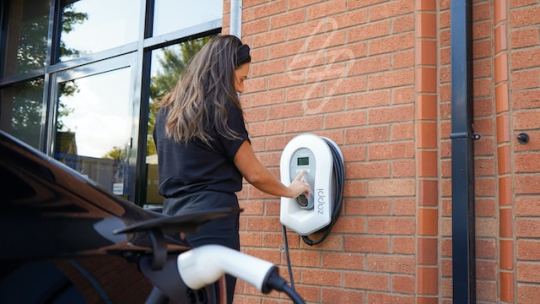
Minimizing your carbon footprint is among the most efficient ways to accept sustainable living. Here are some basic actions you can take:
1. Reduce energy intake: Decreasing your energy usage is a great way to decrease your carbon footprint. Consider turning off lights and appliances when not in use, using energy-efficient light bulbs, and disconnecting electronics when they are not being used. This can make a huge difference in reducing energy use, which in turn lowers greenhouse gas emissions.
2. Use natural light: Take benefit of natural light by opening drapes and blinds throughout the day. Not just does it supply terrific lighting, but it also helps you reduce your energy usage.
3. Stroll or bike: Try walking, cycling or utilizing public transportation instead of driving when possible. This can assist decrease the amount of greenhouse gases that are released from cars and other automobiles.
4. Shop sustainably: Consider buying products that are made from sustainable materials, are eco-friendly, or are produced in an environment-friendly way. This helps in reducing the demand for items that contribute to greenhouse gas emissions.
5. Reduce waste: Try to lower the amount of waste you produce by composting, recycling, and using re-usable bags and containers instead of disposable ones. This helps reduce the quantity of waste that ends up in landfills, which can contribute to greenhouse gas emissions.
6. Conserve water: Conserving water is likewise a great way to reduce your carbon footprint. You can do this by repairing leakages, taking shorter showers, using low-flow faucets and toilets, and collecting rainwater for plants.
7. Consume a plant-based diet: Eating a plant-based diet plan can also help in reducing your carbon footprint. This is since animal items need more resources to produce than plant-based items, and their production can contribute to greenhouse gas emissions.
Public Transport and Sustainable Commute
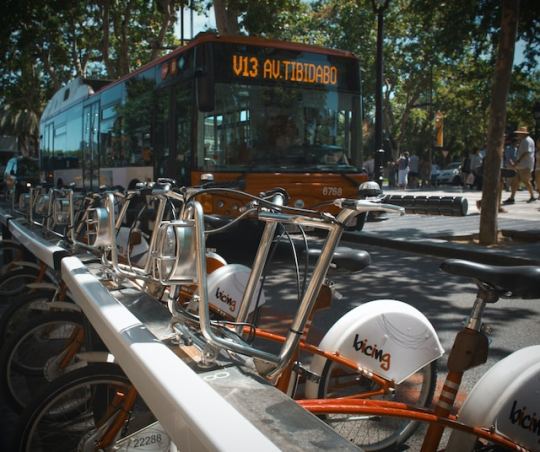
When it pertains to reducing your carbon footprint and greenhouse gas emissions, one of the very best ways to do so is by making use of mass transit. Not just does this help to reduce traffic blockage, but also assists to minimize the number of cars on the road. Here are some practical and easy actions to integrate sustainable transit practices into your day-to-day commute:
Use Mass Transit
-Benefit from buses, trains, and trains whenever possible.
-By making use of public transport, you're helping to decrease the variety of automobiles on the roadway, which can result in fewer greenhouse gas emissions.
Carpooling
-Consider carpooling with coworkers, pals, or household members to lower the number of cars on the roadway.
-This is an excellent way to minimize traffic, while also decreasing your carbon footprint.
Cycling and Strolling
-If you're not too far from your location, consider biking or walking.
-These sustainable commute alternatives not just lower your carbon footprint, but they can also benefit your health!
"Cycling and strolling not just decreases your carbon footprint however likewise assists fight climate change, as it reduces energy usage and decreases the number of vehicles on the roadway." -Andy Murdock, Transportation and Environment Program Director.
Use Sustainable Commute Tools
-Use online tools, like Google Transit or Citymapper, to help plan your sustainable commute.
-This can help you find the finest transit routes, bike paths, and walking instructions in your city.
Single-Use Plastic Alternatives

Single-use plastics are a considerable contributor to plastic waste in the environment. By making a few basic changes in your life, you can minimize your usage of single-use plastics and help make a positive impact on the environment.
1. Bring multiple-use shopping bags to the grocery store: Rather of using plastic bags that wind up in garbage dumps or oceans, bring your own recyclable bags. Not only is this an easy way to minimize your plastic use, however numerous stores and markets offer incentives for bringing your own bags.
2. Use a reusable water bottle: Plastic water bottles are a significant contributor to land fill waste. By using a multiple-use water bottle, not only will you decrease your plastic waste, however you'll also conserve cash in the long run.
3. Swap plastic straws for multiple-use ones: Americans use and throw away countless plastic straws every day, contributing to the plastic pollution crisis. Swap out plastic straws for stainless-steel, glass, or bamboo straws that are recyclable and washable.
4. Select recyclable food containers: Instead of utilizing cling wrap or non reusable containers to save your food, think about utilizing recyclable glass or silicone containers. Not only are they much better for the environment, but they also make for simpler and more efficient food storage.
Food Choices and Sustainable Consuming

One of the most effective ways to accept sustainable living practices is to make mindful choices about the food you consume. By choosing eco-friendly food choices, lowering food waste, and supporting local farmers and growers, you can considerably affect the environment and promote sustainable living.
Here are some easy and practical suggestions to assist you incorporate sustainable food options in your everyday regimen:
1. Choose Plant-Based Alternatives: Meat production has a significant impact on the environment, as it requires large amounts of water, land and energy. By reducing your meat consumption and choosing plant-based alternatives, you can reduce your carbon footprint and also have a healthier lifestyle.
2. Lower Food Waste: Did you understand that almost one-third of all food produced around the world is squandered every year? Minimizing food waste is not just great for the environment, but also for your wallet. Strategy your meals, make a grocery list, and purchase only what you need. Utilize all parts of fruits and vegetables, and store them effectively to avoid putridity. Donate excess food to regional shelters and charities.
3. Support Local Farmers: Buying regional produce not only supports the neighborhood but also promotes sustainable farming. By picking to purchase from local farmers and growers, you decrease the carbon footprint related to long-distance transport, and you get fresh and healthy food. Go to farmer's markets, community-supported agriculture (CSA) programs, and regional food co-ops to discover sustainable and locally-grown foods.
4. Select Sustainable Seafood: The oceans are an essential part of the environment and provide a source of nutrition for millions of individuals. However, overfishing and unsustainable fishing practices have placed many fish species in danger. Pick sustainably gathered seafood alternatives, look for eco-labels such as the Marine Stewardship Council (MSC) or Aquaculture Stewardship Council (ASC) and prevent seafood that is on the red list of threatened types.
5. Grow Your Own Food: Growing your own food promotes self-sufficiency and decreases your carbon footprint. Even if you don't have a large yard, you can grow herbs, veggies, and fruits in small pots and even in your cooking area. This is a terrific method to get fresh and natural produce, and likewise to get in touch with nature.
Mindful Consumption and Ethical Fashion

From food to fashion, we consume a vast array of products daily. One of the significant threats to the environment is fast fashion. Fast fashion is a term used to describe an industry that produces clothes quickly and exploits labor and environmental laws.
So, how can we minimize our ecological effect through mindful usage and ethical fashion?
1. Buy pre-owned clothing
Rather of buying brand-new clothes, explore thrift stores, yard sale, and online markets like eBay, Poshmark, or ThredUp. Purchasing pre-owned clothes is a sustainable practice that decreases waste and supports the circular economy.
2. Buy quality clothing
Purchasing quality clothing might cost more in the brief term, however it pays off in the long run. Quality clothes last longer and decrease the need for regular replacements. Try to find clothes made from natural, naturally degradable, or recycled products.
3. Lease clothing for special events
Instead of purchasing new gowns or fits for special celebrations, lease them. Renting clothes is a sustainable practice that saves money, lowers waste, and helps to keep the clothing out of land fills.
4. Consider the ethics of the brand
Take a conscious choice and think about the ethics of the brand name before buying. Research the brand name's labor practices, ecological policies, and commitment to sustainability. Select brand names that focus on ethical sourcing, fair labor, and utilize sustainable materials.
5. Support local brands
Supporting regional brand names is a terrific method to minimize the environmental impact of fashion. Regional brands often produce clothing on a smaller scale, use less energy for transport, and support the local economy.
Waste Management and Recycling
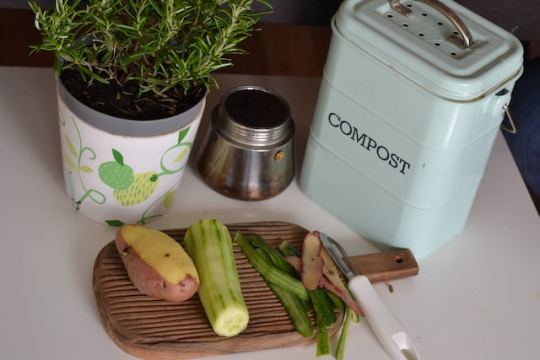
If you're looking to embrace sustainable living practices in your life, among the crucial locations to focus on is waste management and recycling. By decreasing the amount of waste you produce and recycling as much as possible, you can considerably reduce your carbon footprint and make a positive impact on the environment. Here are 10 easy steps to help you begin:
1. Establish a recycling station in your house. Designate a specific area in your cooking area or energy room to sort and store your recyclable items.
2. Purchase a yard waste bin. If your local government provides yard waste pickup, buy a designated bin so that you can compost garden waste and food scraps. This keeps raw material out of garbage dumps and can even result in nutrient-rich soil for your garden.
3. Many mainstream personal care products contain not only harsh chemicals but also packaging materials that can't be recycled. Switching to eco-friendly alternatives is not only better for your health but also for the planet.
4. Repair and fix clothing instead of throwing it away. These easy steps can significantly extend the life of your clothing and minimize fabric waste.
5. Shop with reusable bags and containers. Bring a multiple-use shopping bag with you to avoid wasting single-use bags at the supermarket. Think about utilizing refillable containers for items like bulk grains, nuts, and oils to lower unneeded packaging waste.
6. Compost your food scraps. If you do not have access to backyard waste pickup, consider starting a compost heap in your yard or utilizing a composting bin to break down food scraps.
7. Contribute undesirable items rather of throwing them away. Lots of household items can be donated to charity rather than ending up in a landfill. Clothing, furnishings, and kitchenware are just a few examples of products that can be offered a brand-new lease of life.
8. Use rechargeable batteries instead of disposable ones. Batteries contain products that can be hazardous to the environment if not disposed of appropriately. Changing to rechargeable batteries is a simple way to decrease waste.
9. Minimize junk mail. Register for services to eliminate your name from direct-mail advertising to lower the quantity of paper waste produced by scrap mail.
10. Carry out a clean-up day in your regional community. Get together with your neighbors to tidy up your parks and beaches. This not only assists the environment but also encourages community participation.
Conclusion
Integrating sustainable living practices into your daily routine doesn't have to be frustrating or tough. By implementing little modifications, such as reducing waste, picking environmentally friendly items, and utilizing alternative transport methods, you can make a huge influence on the environment and live a more environmentally friendly lifestyle. Why not start today? Select a couple of the pointers we've shared and dedicate to integrating them into your daily life. Together, we can produce a more sustainable and flourishing world for future generations. Do not forget to share this article with your pals and family to assist get the word out and inspire others to join the sustainability movement.
#Youtube#sustainable living#sustainability#green living#eco friendly#sustainable lifestyle#environmentallyfriendly#reduce#reuse#recycle#mindful living#ethical living#zero waste#sustainable choices#eco conscious#green tips#sustainablecommunity
13 notes
·
View notes
Text
Love this 👏🏻👏🏻👏🏻👏🏻👏🏻
instagram
#slow stitch club#mending#visible mending#slow fashion#eco friendly#eco conscious#clothes#sewing#repair#diy#crafting#Instagram
13 notes
·
View notes